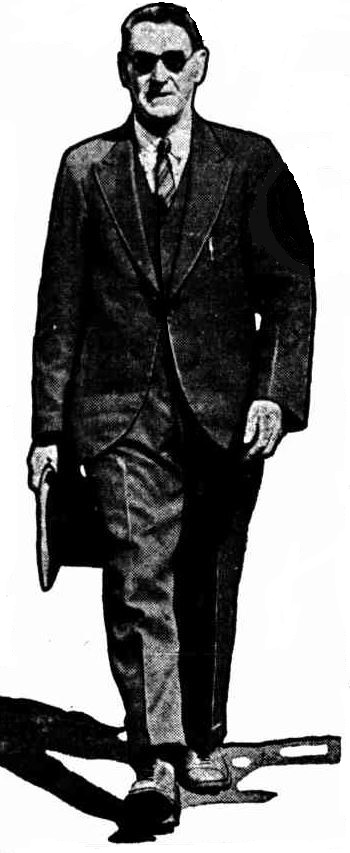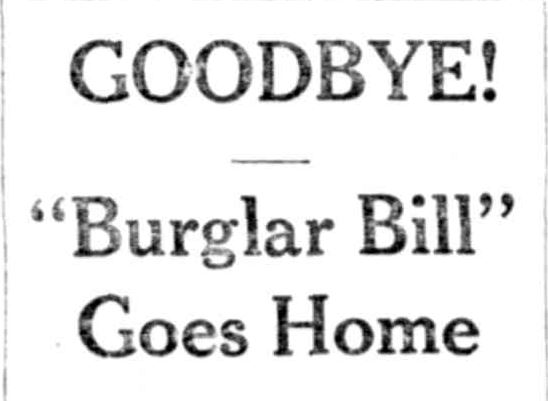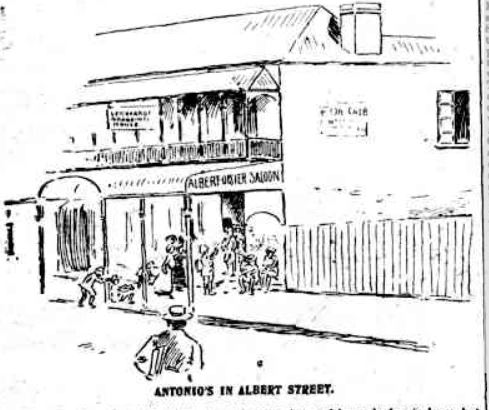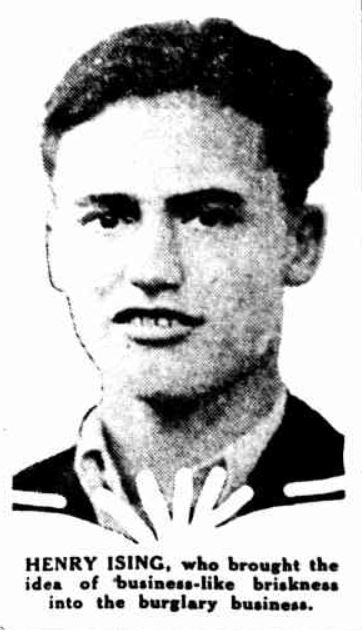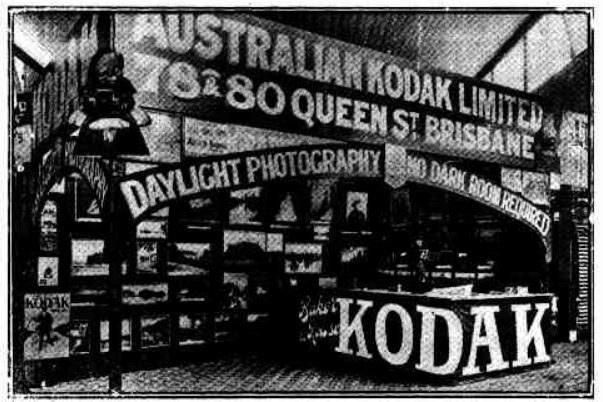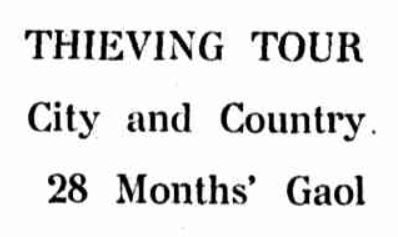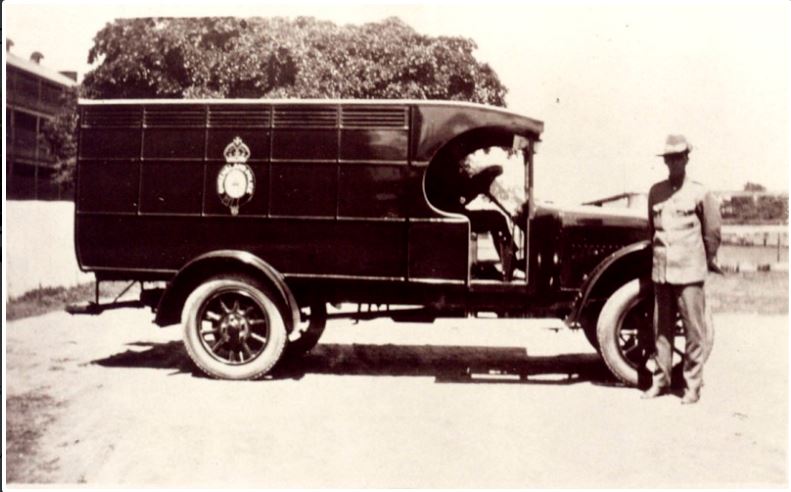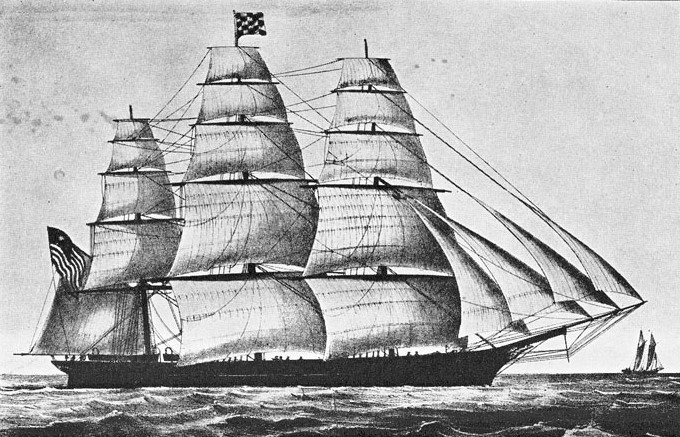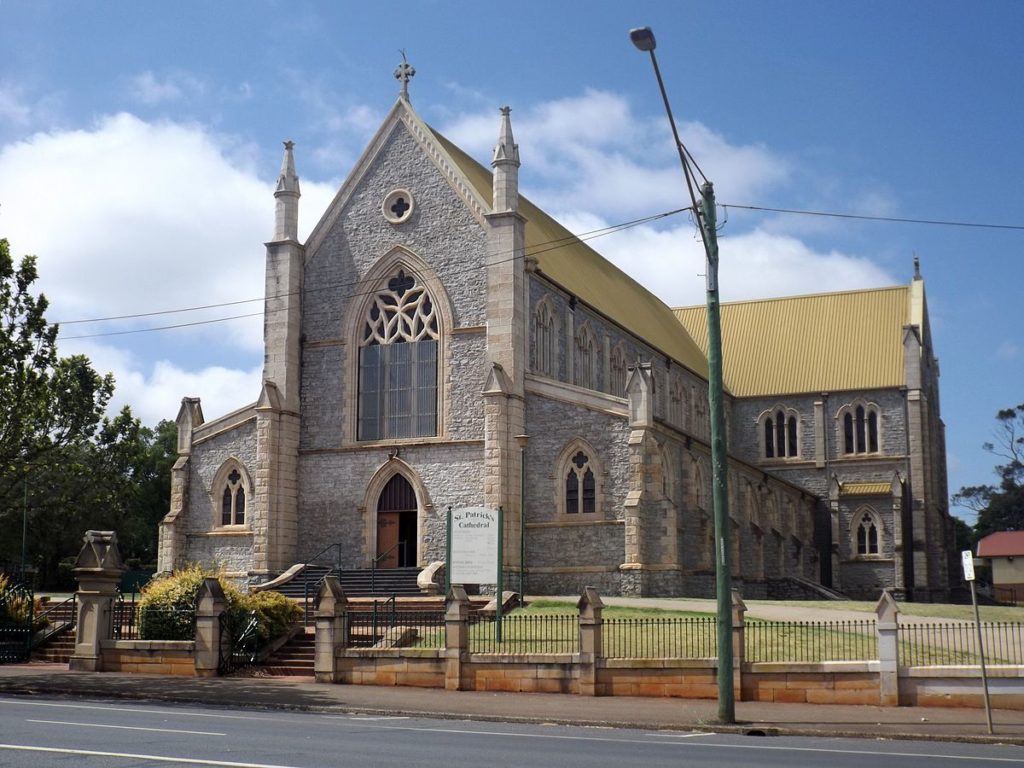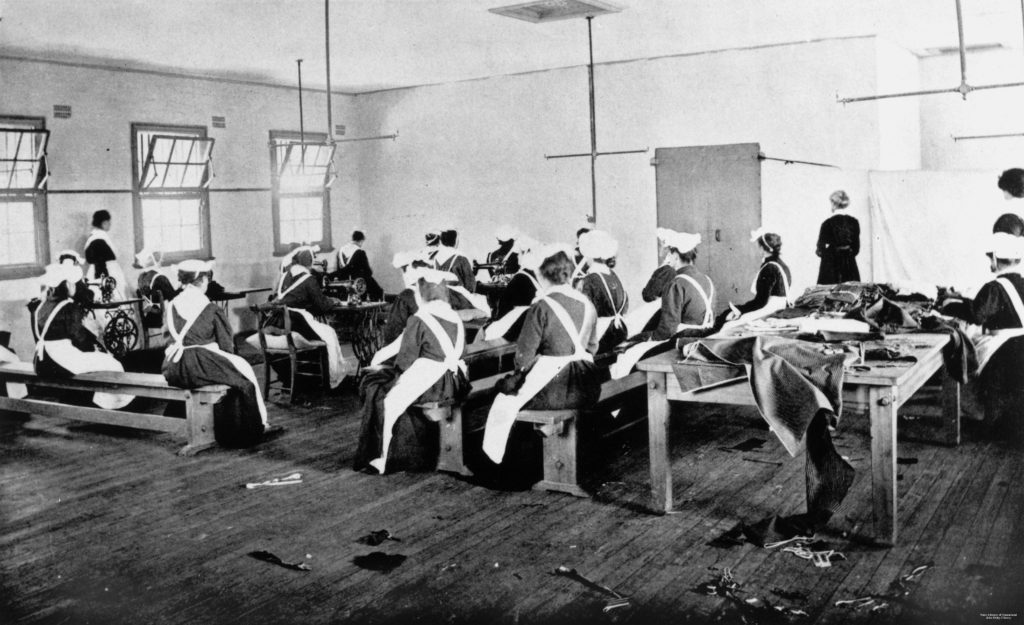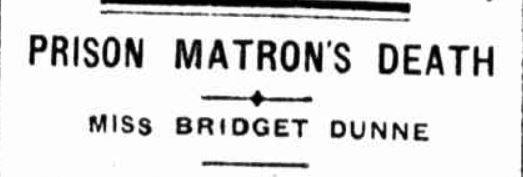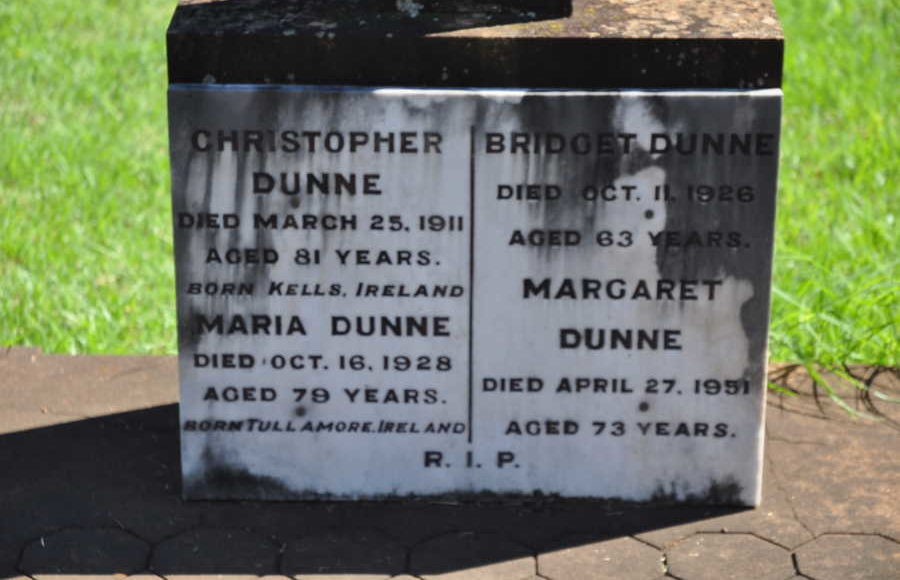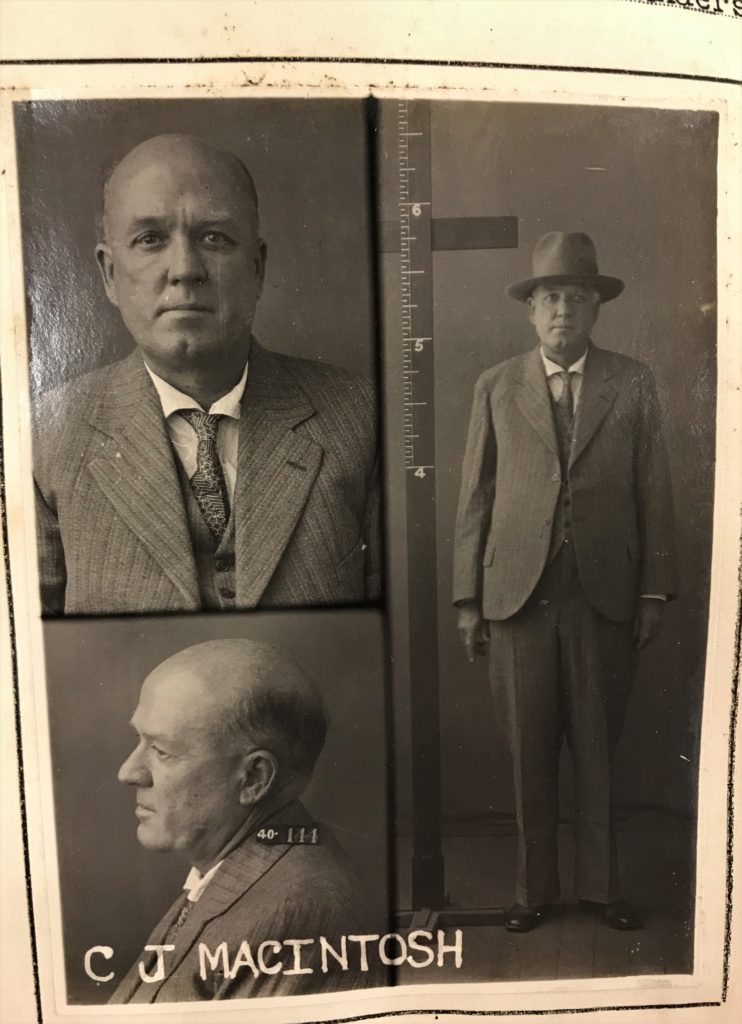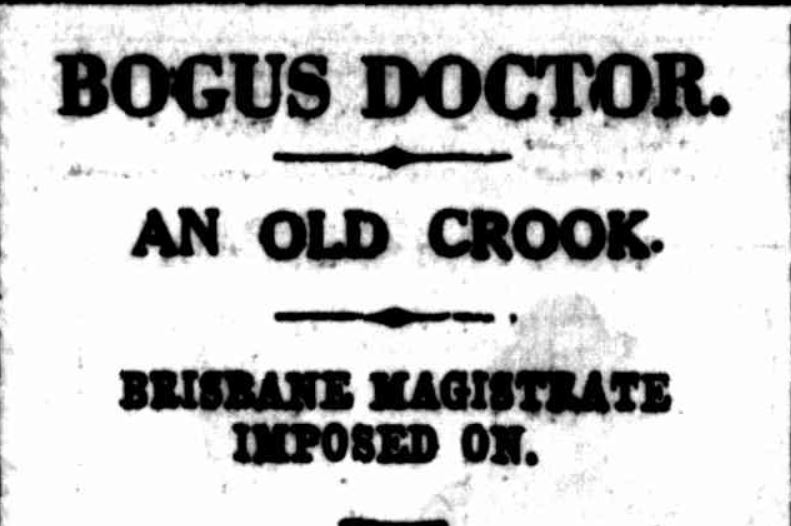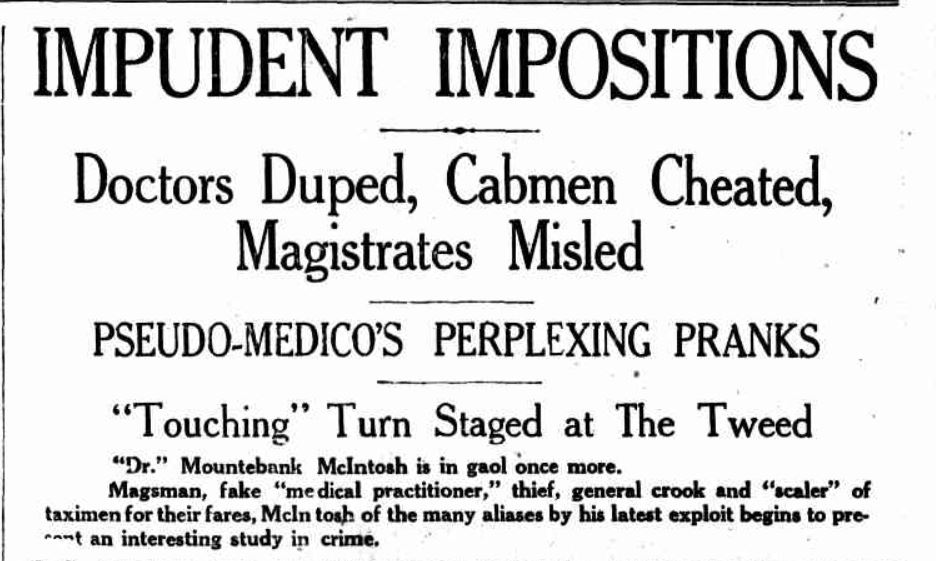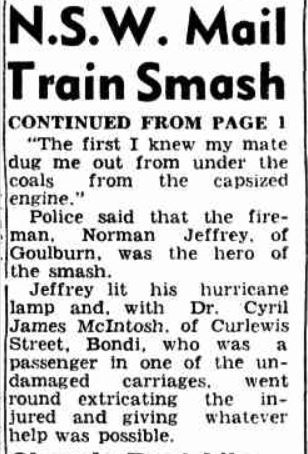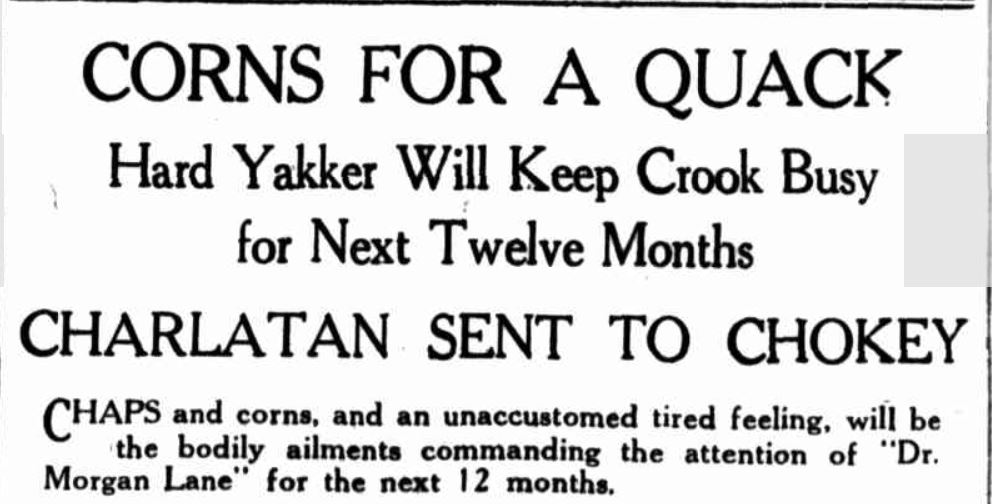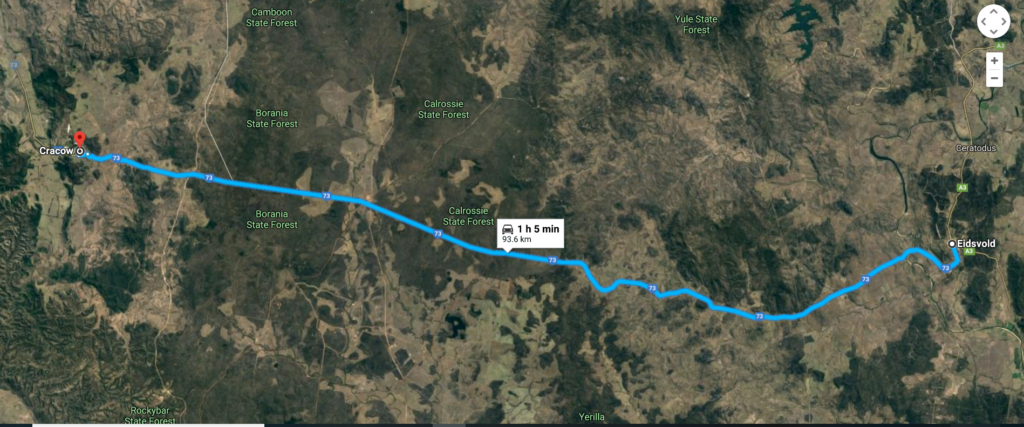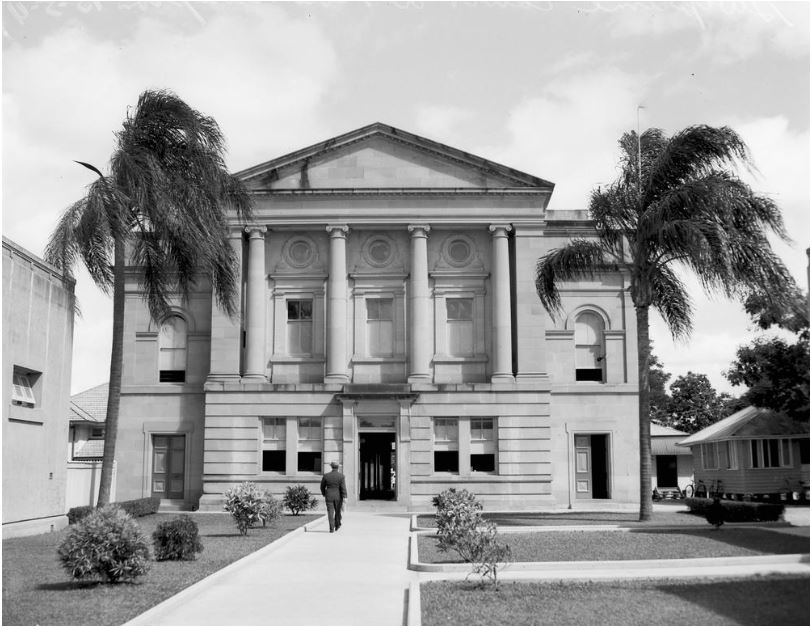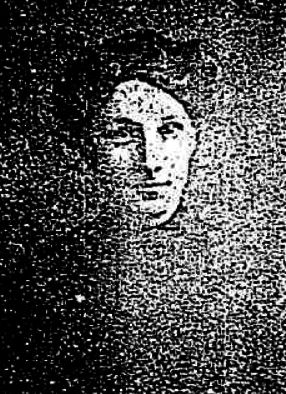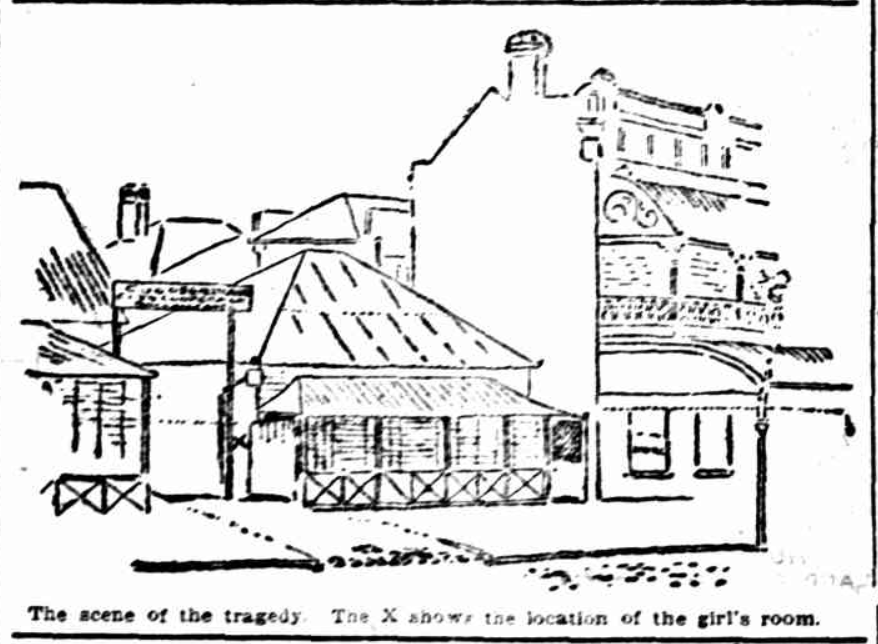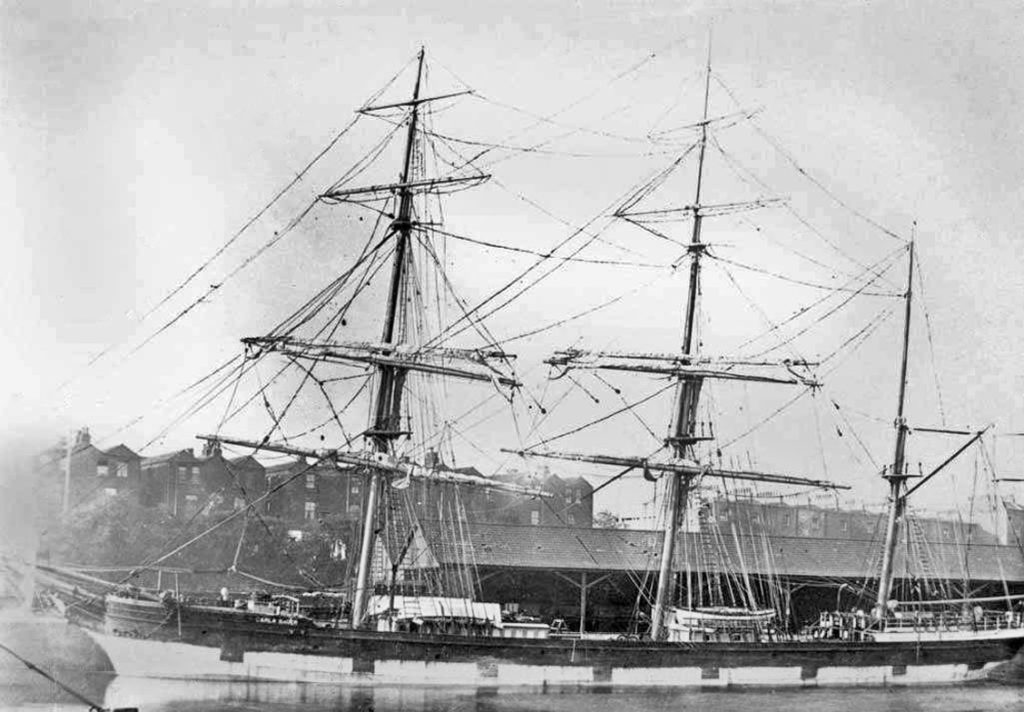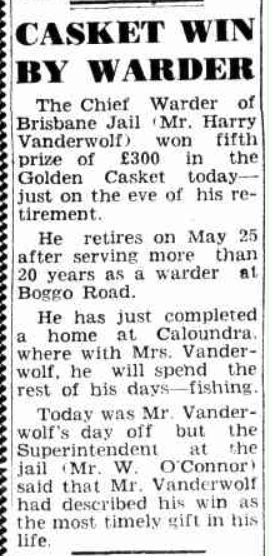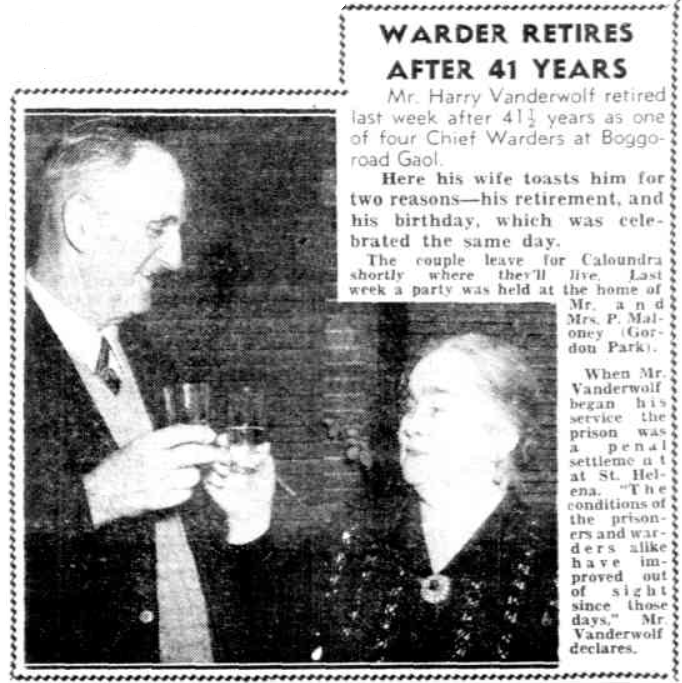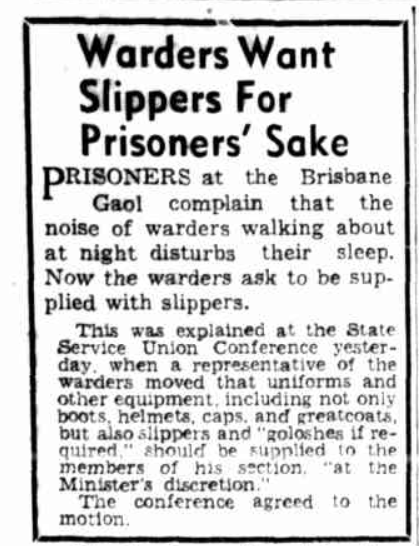Burglar Bill – William Thompson
- On : 17 August, 2018
- By : Boggo Road Gaol
- Category : Stories
- View : 1942
Burglar Bill – William Thompson
William Thompson, known in every state in Australia as Burglar Bill; has been an associate with some of the country’s most notorious criminals. Some of them cold blooded killers who have ended their days on the gallows.
William Thompson
Alias: Burglar Bill, William David Thomas, James Hooper, William Thomas.
Native Place: England
Age: 47 Years
Stature: 5ft 6 ¼ inches
Make: Slight
Complexion: Dark
Hair: Black
Eyes: Brown
Weight: 10 stone
Previous Convictions: 22
Remarks: No eyelashes; scar left shin; small scar right shin.
William Thompson, known in every state in Australia as Burglar Bill; has been an associate with some of the country’s most notorious criminals. Some of them cold blooded killers who have ended their days on the gallows.
When first entering a life of crime he thought he could beat the law. But after twenty-seven years in and out of gaol, in 1937, he finally realised that crime does not pay. In a rare treat, the Truth newspaper in Brisbane published his full story, perhaps he would tell it best anyhow!
I can look back on those wasted years- years that I cannot recall to live over again, now that I have learned a bit of sense. Perhaps, as crooks go, I have had a particularly eventful life; I have met and consorted with many of the ‘big’ men; I have witnessed executions from inside and I have spent some weeks in a cell that once held the famous Ned Kelly. But those memories are nothing to be proud of. I am well aware that today I am regarded as one of the most persistent burglars in Australia, and I am certainly not proud of my title “Burglar Bill”. Still, those years of my life have passed. I am a habitual criminal, and, I fervently, hope that others may benefit from my experience.
Starting out in 1904 as a sixteen-year-old kid, I was so small that they stood me on a fruit case so that I could see over the edge of the dock. Then it came, slowly and sombrely, my first term, Four years.
There was plenty of dry bread and water and each prisoner was chained to a heavy ball. There were no children’s prisons in these days. These were the old prison days where you served every minute of your sentence.
Imagine being sixteen and living under those circumstances. My associates were all hardened crooks. I drifted into a life of crime and met many infamous crooks.
One I knew well was, Angus Murray who shot a bank clerk in Melbourne with his mate Richard Buckley. Murray paid for his crime at the end of a rope. I was one of the last men to speak to him before he marched to the gallows. By then I had been in and out quite a few times and was in fact a “habitual criminal” and noted cracksman.
Meeting Murray
My meeting with Murray happened this way: I chanced to be in Melbourne shortly before they hanged him. I was arrested on a charge of being a suspected person and while I was in court a chap gave me a message to give to Murray if I went “In” well I duly collected my three-month term.
I made it my job to get near Murray’s cell to give him the word. This was the message I gave him:
“The boys are trying their hardest to get a reprieve for him and if they were successful they would spring him.”
I was to tell him that “the boys were going to tunnel under the prison, up to the chapel, and then get him out after church service. Of course, Murray didn’t get a reprieve and the plot was never discovered.
Another man I met was “Squizzy” Taylor. “Squizzy” was my daily companion in the years 1907 and 1908 when he was married to Dolly Gray and before he became the gangster that died by the gun.
Burglar Bill’s career was hardly a successful one and by his own admission. It was a very monotonous one. For a burglar and safe cracker Bill never really got away with too much loot.
Why I remember the time when I practically broke my back carrying a safe for miles only to find after breaking it that there was 11s in the till! Other times I had gone to a lot of trouble to get the safe door open only to find the magnificent total of two two- penny stamps or something like that!
Invariably the result was the same. Bill was caught and sent back to Gaol. It wasn’t until 1929 however, that Queensland was ‘blessed’ with the presence of the infamous “Burglar Bill”.
To Boggo Road Gaol
William Thompson was arrested in Bundaberg in November 1929 for Breaking, entering and stealing from the store owned by Vincent Patrick Breslin in Gladstone. He with an accomplice Alice Wilhelmina Dalton stole goods and some money. The goods were recovered after they had been sent by train. He appeared before the circuit court and was sentenced to a year and ten months imprisonment with hard labour.
No sooner had he been released, as always, he committed another crime. Fortunately for him Burglar Bill appeared before Justice Macrossan, who, had been trying to change a thing or two about the sentencing of criminals in Queensland. William Thompson appealed to the Judge that his life had been difficult and that he would like another chance to go straight. This being exactly the type of case Justice Macrossan had in mind. Thompson became a test case. He was sentenced to three years imprisonment, but he was released on a hundred-pound bond not to reoffend within the three years.
Well… I will let Burglar Bill tell you the rest.
I’m the chap who Mr, Justice Macrossan, back in 1931, conducted the historic experiment with. I let –
him down, God knows why! I remember it all very vividly. I had been found guilty of breaking and entering a store at Ipswich and on October 6, 1931, I stood before the Judge to receive my medicine. I remember I did not feel good as I stood up in the dock and asked straight out to be given a chance. I told of all my troubles and the outcome of It was that his Honour did give me a chance. It was too good to be true!
After that other weird and wonderful things happened to me. I did something I had never been
guilty of before— I fell In love!
I proposed, she accepted, and we got “spliced.” We didn’t ‘have much cash in the coffers though, and I wanted to see the little woman well dressed. So, guess what I did? I stole some nice dresses for her. Of course, I was caught, dragged before the “beak” and collected a three months’ term. That wasn’t so bad, although It meant that I was torn away from my bride. The worst of It was that I had broken the three years’ bond’ the judge gave me.
Well, I felt pretty ashamed of myself when they dragged me before Mr.Justice Macrossan. I was really very upset, because It’s not often on old crook gets such a break as the judge gave me on the Ipswich job. Well, the blow duly fell. I collected the three years’ term, and was declared an habitual as part of the sentence. “
That meant three things I had broken my word to a very decent Judge, my wife was heart-broken and disgusted, and I was back in gaol for decent sort of a “stretch.”
Burglar Bill served three years and three months with hard labour in Boggo Road Gaol. When he was released, he was ordered to leave the state. Unfortunately, Bill didn’t have two cents to rub together. Local charities and even the detectives of Queensland chipped in ‘a few pounds’ to get Burglar Bill out of Queensland for good.
William Thompson and his wife lived in Victoria where he returned to his family and friends and went back to his old occupation fruit hawking.
Perhaps Burglar Bill turned over a new leaf. Somehow, I suspect not.
This Sunday at Boggo Road Gaol is our monthly Prisoner Tour. Come along, get locked up, and hear from one of our former prisoners Wayne Weaver what life behind bars was really like! Tickets are selling fast, you do not want to miss this! You can book your tickets here
This article was contributed by Research Coordinator Sue Olsen as part of the ongoing research program for Boggo Road Gaol Pty Ltd. The aim of the program is to bring to light and share articles relating to Boggo Road for the purposes of review and study. Do you have a story to share or something you would like us to know about? You can contact the research team here
Escape- Dynamite Escape Plot
- On : 11 August, 2018
- By : Boggo Road Gaol
- Category : Stories
- View : 1713
Escape! – Dynamite Escape Plot
In the last week of May 1954, prison officials at Boggo Road Gaol received a warning from inside the prison that an escape had been planned and that they were to blast their way out with dynamite!

The planned break out of six career criminals would have been the largest in Queensland History at the time. It was huge; and word had reached the officials just in the nick of time.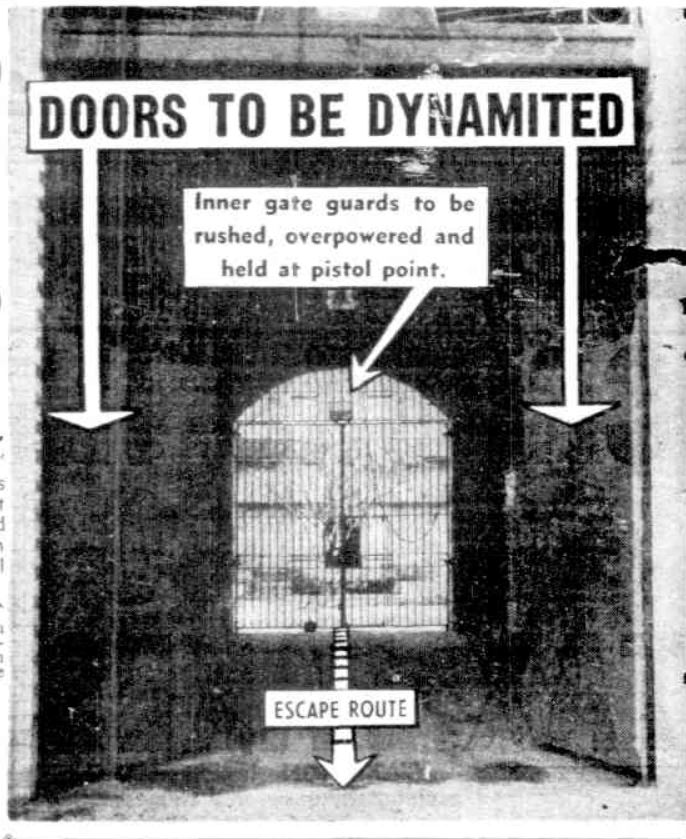
The prisoners were four habitual criminals and two “tankmen” or “safe blowers”. The men, all with the necessary experience to pull this off, needed help from the inside. They had just the right man in mind. This man, however, would be the downfall of the entire plot.
The Plot
One Sunday morning after the usual Sunday sacred services and concert, the six prisoners were to rush to overpower the guards of the inner gate and demand the front gate keys. Should they be refused, the “tankmen” under the protection of two prisoners with guns would dynamite the two heavy steel doors of the gaol.
Guns and dynamite would be smuggled in from “contacts” on the outside and further assistance to complete the escape would be provided afterwards.
Ratted them out
The warning of the escape came via a most unlikely source – a notorious Melbourne underworld big shot, Norman Bradshaw alias Cornelius. Bradshaw was serving an eighteen-month stint for false pretences. Bradshaw named the six prisoners involved in the plot, claimed they wanted him to be in it. Likely they wanted his worldly contacts to help with providing the essentials for the escape.
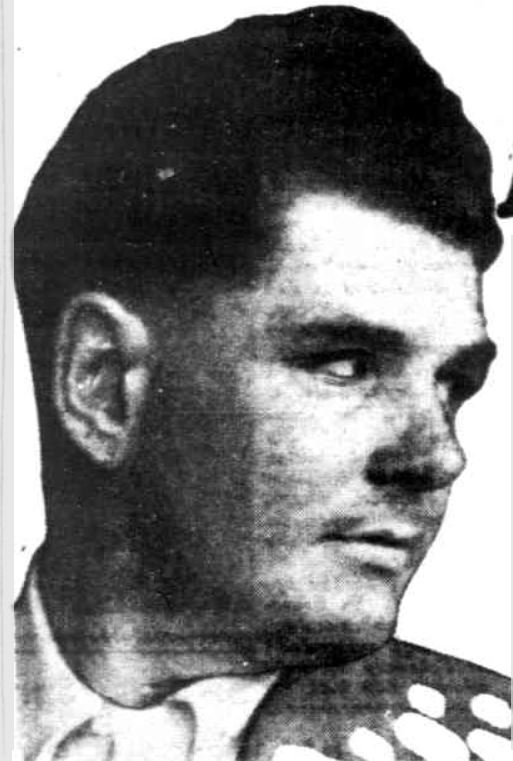
The six prisoners were separated as a result of the subsequent investigation. Each received an a
dditional three months to their sentence for attempted escape. Two of the more troublesome were sent to Stewarts Creek prison in Townsville. The others widely separated into the most secure wings of Boggo Road Gaol.
Unfortunately, even in the most secure prisons, revenge will strike. Bradshaw was attacked by prisoners several times over the coming months. Eventually locked away for his own safety, he would serve his last six months in solitary confinement.
This Sunday come behind the giant red brick walls and heavy steel gates and hear about some of the desperate prisoners that tried to escape Boggo Road Gaol and some of the few that succeeded. You can book your tickets here
This article was contributed by Research Coordinator Sue Olsen as part of the ongoing research program for Boggo Road Gaol Pty Ltd. The aim of the program is to bring to light and share articles relating to Boggo Road for the purposes of review and study. Do you have a story to share or something you would like us to know about? You can contact the research team here
A Female Burglar- Maria O’Rourke
- On : 2 August, 2018
- By : Boggo Road Gaol
- Category : Stories
- View : 1739
A Female Burglar – Maria O’Rourke
Young women of poor origins quite frequently found themselves falling afoul of the law. Her Majesty’s Prison for Women Brisbane at Boggo Road was where most of these women ended up.
Maria O’Rourke
Known aliases: Violet Gray; Lapworth ; Green ; Ruby Hanley
Native Place: Queensland
Aged: 19 years
Height: 5 ft
Make: Medium
Complexion: Fresh
Hair Colour: Brown
Eye Colour: Blue
Weight: 7 Stone 12 oz
Previous Convictions: 8
Marks: Nil
Maria first appeared before the bench when she was just fourteen years old. As she was walking past the residence of Mr and Mrs Powell at South Brisbane, Maria spotted an open window. She took the opportunity to steal a ring from the chest of drawers belonging to Mrs Powell. She was seen wearing the ring which was later identified by Mr. Powell. Maria was taken before the bench and fined 10 shillings or in default, one month in prison.
This was the beginning of a long run of break and enters and charges of stealing for Maria which would eventually see her serving three years imprisonment with hard labour in HM Prison for Females Brisbane later known as Boggo Road Gaol. No sooner had Maria been released, she found herself in trouble again and back behind bars.
The time behind bars was definitely not a good experience for Maria. She began to associate with all of the wrong kind of people. Interestingly, every time Maria is before the court, her mother appears on her behalf begging for her daughter not to be sent to gaol, and every time it has no effect. Makes one wonder what the home life must have been like.
In researching this article I have had the greatest of difficulty locating even the smallest sliver of information on the O’Rourke family. This tells the researcher one thing -they were poor, in fact likely the poorest of poor. Perhaps that is why young Maria was on the street at just fourteen years old, committing some very serious crimes.
Without lawful means
Perhaps the saddest part of Maria’s story is yet to come. In May 1905, police raided a known house of ill fame (a known brothel) in Albert street belonging to a Greek man named George Antonio.
We have discussed George Antonio before when looking at the case of the Juett sisters. Indeed, on this particular day, Maria O’Rourke was arrested with Lily Juett at Antonio’s as being without lawful means of support. A similar charge to vagrancy, it is usually the law stepping in for the person’s own good, providing a roof over their head and a hot meal. The typical sentence for this “crime” is three months imprisonment with hard labour. Lily Juett was sent to the care of the good people of the Salvation Army Home For Wayward Young Ladies. Maria was not so lucky. She was sentenced to three more months behind the walls of Boggo Road Gaol.
For more about Antonio’s house of ill fame click here
Maria, it seems, did not learn her lesson for some time to come. It was a vicious cycle and Maria was only just 19 years old. In and out of prison for the next three years on similar charges as before; stealing something or being arrested for having nothing at all.
Finally, it seemed things were looking up for Maria; after her final release from prison in March of 1910, she meets a fine young man named McRae. Just two short months later, they were married in Brisbane. Never again does Maria appear before the court. She has turned the corner and made it out of the shadows.
The same cannot be said for the majority of women with the same history. For some, their entire life will be in and out of the notorious HM Prison for females more commonly known as Boggo Road Gaol.
Want something cool to do this Sunday? Learn more about the women of Boggo Road Gaol by taking an 11am History Tour and watching our Prison Players perform! You can book your tickets here
This article was contributed by Research Coordinator Sue Olsen as part of the ongoing research program for Boggo Road Gaol Pty Ltd. The aim of the program is to bring to light and share articles relating to Boggo Road for the purposes of review and study. Do you have a story to share or something you would like us to know about? You can contact the research team here
The Speed King Crook – Henry Ising
- On : 25 July, 2018
- By : Boggo Road Gaol
- Category : Stories
- View : 1494
The Speed-King Crook – Henry Ising
In the winter of 1931, South-East Queensland was in the grips of a crook like no other that the Queensland authorities had seen before. German naval deserter Henry Ising was the speed king crook. Ising was fast, clean and managed to carry out fourteen separate robberies without being detected. That was until he got a little too flash with the cash.
Native of: Germany
Arrived: Overland from NSW
Year: 1930
Trade or Occupation: Carpenter
Age: 20
Religion: Roman Catholic
Height: 5 feet 10 inches (178cm)
Weight: 10 Stone (63kg)
Make: Strong
Complexion: Fresh
Hair: Brown
Eyes: Brown
Education: Read and Write
Remarks: Mole on right side of chin
In the winter of 1931, South-East Queensland was in the grips of a crook like no other that the Queensland authorities had seen before. German naval deserter Henry Ising was the speed king crook. Ising was fast, and clean and managed to carry out fourteen separate robberies without being detected. That was until he got a little too flash with the cash.
Deserter
It is not known exactly when Henry Ising arrived in Australia. He is known to have been in New South Wales in August of 1930, and it is thought that he deserted from a German naval ship in port.
Ising came to Queensland in the end of 1930, seeking work in the north. As we would soon discover, Isling wasn’t much into looking for work and quickly turned his hand to thieving instead.
Stop Thief!
On his stolen motorcycle, he acquired himself a loaded revolver, some cash and some clothing in Murwillumbah, New South Wales. Fleeing over the border, he made his way to Ipswich. Over the next few days in the beginning of May; he broke into several stores making off with clothing, tobacco and some loose change.
Next. he was on to Brisbane, where again he would break into several stores including Rosendorff Limited stealing a Gramophone. The list continues – over the next few weeks, Ising quickly filled his pockets with the proceeds of his crimes.
Cash Splash
Henry Ising was getting too good at his crimes, with his ego boosted, he made one big cash splash. No longer would he ride around on his motorcycle. He would buy a car and ride around in style. Just like a kid with a brand-new toy, Ising drove the shiny new car everywhere. Even on the job!
Detectives Damro and Lloyd investigating the recent spate of thefts discovered the young man had quite a bank for a carpenter and painter that hadn’t done much work.
‘“He had money to burn, and honest men in these times are not burning too much money” argued the sleuths’
To Toowoomba
After a few more targets in the city, the authorities were on his trail. Ising had to get out of town, and quick. He left Brisbane and headed back to the Darling Downs. Arriving in Toowoomba, he couldn’t resist the “soft” country targets. The friendly locals were all too happy to show Ising their merchandise. The clean cut, wealthy looking young man cut quite the figure in town. Little did the good citizens of Toowoomba know, he was simply choosing what to steal next!
By July, Ising had racked up a quick fortune, his fourteen jobs had made him quite a wealthy man. Living the high life, he returned to Brisbane to his home at Spring Hill. He had enough to live on for a while. Ising thought he had gotten away with it all; that is until Detectives Damro and Lloyd rapped their knuckles on his front door.
In his possession they found his kit containing a loaded revolver, a mask, a bunch of skeleton keys, one of which would open almost any lock, and a kit of tools for forcing entry. They also found some of the stolen property and some cash a total value of £53 well shy of the estimated £270 that was missing.
Before the Bench
Ising appeared in the Brisbane Police Court on the 14th of July some three months after his thieving tour of city and country began. Prosecuted by Detective Senior Sergeant McIver on fourteen separate charges, a list of the myriad of items stolen was placed before the court.
Cameras, jewellery, watches, boots and shoes, men’s leather coats, women’s fur coats, loose cash, boxes of cigars, reach-me down suits, musical instruments, pistols, tobacco and cigarette cases just to name a few.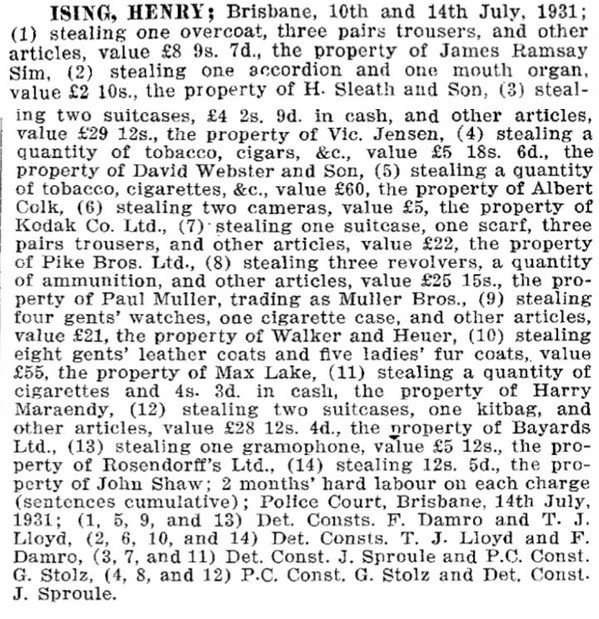
Describing how Ising made entry to the businesses, Detective McIver said, “If the window was easily forced, that was his way of entry, if not, the skeleton keys would unlock the door.” Ising moved quickly, stealthily, not staying anywhere very long and always did his jobs in the middle of the night.
Ising had earlier plead guilty to all charges. Police Magistrate Ferguson sentenced Ising to two months imprisonment with hard labour on each of the fourteen charges, the sentences to be served cumulatively for a total of twenty-eight months.
Ising received the sentence with a brazen grin on his face. It’s hard to say for sure, but I suspect he would not be grinning when the black maria pulled up at the gates of Her Majesty’s Prison Brisbane – the notorious Boggo Road Gaol.
Ever wondered what it would be like to have both a former officer and prisoner taking you on a tour of the gaol at the same time? This Sunday join Kevin and Wayne on this special 90-minute tour! This tour is strictly 15 years and over ONLY due to the language used and images seen on the tour. Tickets are selling fast, you do not want to miss this! You can book your tickets here
This article was contributed by Research Coordinator Sue Olsen as part of the ongoing research program for Boggo Road Gaol Pty Ltd. The aim of the program is to bring to light and share articles relating to Boggo Road for the purposes of review and study. Do you have a story to share or something you would like us to know about? You can contact the research team here
Trailblazer- Bridget Dunne
- On : 18 July, 2018
- By : Boggo Road Gaol
- Category : Stories
- View : 2413
Trailblazer – Bridget Dunne
In the twentieth century it was common for occupations to be handed down from father to son, particularly when it relates to a position in a government department – this was seen to be a very successful step forward, indeed, a hand up. This week we are looking at an interesting case of a father to daughter occupational connection. Christopher and Bridget Dunne were both employees in the Prisons Department for their entire careers in Australia, both having served a portion of their career in the Brisbane Prison later known as Boggo Road Gaol.
In the twentieth century it was common for occupations to be handed down from father to son; particularly when it relates to a position in a government department as this was seen to be a very successful step forward; indeed, a hand up. This week we are looking at the interesting case of a father to daughter occupational connection. Christopher and Bridget Dunne were both employees in the Prisons Department for their entire careers in Australia. Both having served a portion of their career in the Brisbane Prisons later known as Boggo Road Gaol.
Indeed, it was very common for nepotism to take place in Government Departments, usually because those in the employ of the government could often afford to educate their children (particularly sons) in some of the finer schools in Queensland. Those students would then make the finer cadets and employees of the department. Young ladies also had the option of better schooling, but it was very uncommon. Women in society of the time were not generally among the working classes, particularly if she was interested in marriage and children (which was just the done thing).
Some young ladies, however, were not. I suppose dear Bridget would fall into that category. Most of the ladies in the Prisons department were the wives of prison officers. This is in fact the first father – daughter connection I have come across. Bridget was indeed a trailblazer.
Christopher Dunne
Clipper ship Golden CityChristopher Dunne was born in Kells, County Meath, Ireland in 1830. He was married first to Bridget Timmins in 1862. They had two older children and Bridget was expecting their third child on the voyage to Queensland on the Golden City. Their third baby was born somewhere between London and Brisbane and was listed at the customs inspection of the ship. Baby Bridget Dunne was the fifth member of the family.
Sadly, it seems that Bridget Dunne (nee Timmins) did not do well from the pregnancy and long voyage and died just a few weeks later. She was buried at the Paddington Cemeteries (where Suncorp Stadium now stands) and there is no formal registration of her death.
Christopher Dunne joined the prison service not long after the family arrived from London. His first appointment was at the Brisbane Gaol then located at Petrie Terrace; then at the police lockup at Ipswich.
It was in Ipswich that he would meet his future bride Maria Doorley. Maria too was a young Irish lass; she had emigrated with her father on the Saldanah in 1863 at just fourteen years old. They were married at St Andrew’s Catholic Church in Ipswich in 1872.
Indeed, the Catholic faith would be a strong influence in Christopher’s life. All his children were baptised into the church, both of his marriages were solemnised in the church, and even his last moments would be in faith.
Christopher and Maria went on to have four more children. The family resided at Ipswich at their home “Argan” on Margaret Street for the remainder of their days. Christopher would go on to work at the new HM Brisbane Prison in 1883 (Number One Division Boggo Road Gaol) for two years before returning home to Toowoomba and joining the staff at the Toowoomba Gaol.
Christopher remained at the Toowoomba prison as Senior Warder until his retirement in 1899. He died some twelve years later in 1911 and was buried at the Toowoomba Cemetery. His obituary in the Darling Downs Gazette summarised his extensive career but also his character:
He was the last surviving member of “The Dunne’s of Carstown”; Deceased was of a very retiring disposition but by his unostentatious manner he endeared himself to numerous friends. Numerous wreaths, telegrams and letters were sent from all over the state (fifty-three wreaths and thirty-one telegrams and letters).
His remains moved from St Patricks Roman Catholic Church to the Toowoomba Cemetery where he was laid to rest.
Bridget Dunne
Bridget began her career in the prison service working under her father at the Toowoomba Prison as wardress in the industrial school for girls in 1898. This was initially under a trial basis for six months; I suppose something like a traineeship. It obviously meshed well, as Bridget was officially made a wardress in the official announcements for the Prisons Department in 1899. Interestingly, just before her father retired!
Bridget went on in leaps and bounds from there, working under the mentorship of Sarah Ann Nixon, Wardress in the Women’s Prison at Toowoomba. Quickly rising through the ranks, she was soon temporary senior warder when Sarah Ann Nixon was made Matron in 1901.
During this time a great deal of change was happening in the prisons of South East Queensland. Indeed, a great shift was soon to be made, in the next twelve months three prisons would close and the Her Majesty’s Prison Brisbane (Female Division) would open.
The female division is the only remaining section of the Brisbane Prisons (later known as Boggo Road Gaol). This division would later be taken over as a men’s division and the women would be moved several times on the gaol reserve.
One of the prisons that eventually closed was the female prison at Toowoomba. Bridget Dunne became Warder and Sarah Ann Nixon became Senior Warder under Matron Sarah Browne.
Over the next five years, Bridget learned to manage the women under her charge. Towards the end of 1908, Matron Sarah Browne fell ill and subsequently retired. Sarah Ann Nixon was promoted to Matron and Bridget was promoted to Senior Warder, quite a step up from her position as wardress. As the years would pass she would rise in rank again, this time in March 1923 when Sarah Ann Nixon fell ill, she was made Temporary Matron. By September, Sarah Ann Nixon had retired, and Bridget was made Matron of the Female Division, Boggo Road Gaol.
Sadly, Bridget would only remain in the position for two and a half years. Having been ill for the previous twelve months, she was forced to take leave in July 1926 after almost thirty years of service. Bridget would never return to her position. She died on the 13th of October 1926 at just fifty-eight years old.
Bridget Dunne had never married, nor had she had any children. Her remains were sent by train to Toowoomba. She was buried with her father at the Toowoomba Cemetery.
Her obituary in the Queensland Times newspaper best describes her career and her character:
She always displayed a sympathetic and humane spirit to those who came under her charge. Often at personal inconvenience. Little acts of kindness were performed by her, particularly when they were once more entering on the battle of life.
These remarkable officers are just two of many that entered the big iron gates each day. This Sunday, you too can get locked up by one of our former officers! Come inside and find out some of the fascinating aspects of life behind bars. If you are on good behaviour you might even get early parole! You can book your tickets here
This article was contributed by Research Coordinator Sue Olsen as part of the ongoing research program for Boggo Road Gaol Pty Ltd. The aim of the program is to bring to light and share articles relating to Boggo Road for the purposes of review and study. Do you have a story to share or something you would like us to know about? You can contact the research team here
Mischievous, Malevolent or Mad? Cyril James MacIntosh
- On : 12 July, 2018
- By : Boggo Road Gaol
- Category : Stories
- View : 2465
Mischievous, Malevolent or Mad? Cyril James MacIntosh.
Cyril James MacIntosh was perhaps one of the most frequent prisoners in gaols all over the eastern side of Australia. His remarkably habitual career as a celebrated bogus doctor graced Queensland, New South Wales, Victoria, South Australia and Tasmania. Known by at least seventeen aliases and with at least forty charges to his name, the question remains: was he simply mischievous, malevolent or completely mad?
Known Alias: Cyril McIntosh, James Thomas Fletcher, Dr. Fletcher, James Fennett, Thomas Fennett, Dr. Fennett, Dr. Ferguson, Dr. Fletcher Fitzgerald, James Leo, James Leo Anderson, David Hardie, David Hardy, John Thomas Fraser, George Arthur Sampson, Morgan Lane, Dr. Morgan Lane, Dr. Gillespie, John Thomas Fletcher and of course Cyril James MacIntosh!
Native Place: Queensland
Year of Birth: 1887
Height: 5 ft 7 inches (170cm)
Weight: 11 stone 2oz (71kg)
Eyes: Blue
Hair: Brown
Make: Slight
Complexion: Fresh
Marks: Scar centre of forehead; scar right eyebrow; large mole under right ear; operation scar right side of stomach;
It was very difficult to figure out what exactly to call Cyril James Macintosh. With seventeen known aliases and no doubt many more that lie undiscovered, we thought best to call him what he was most commonly known as. Even that statement is borderline; his convictions were so numerous, and over such a vast area it is practically impossible to find them all. We will do our best to pick some of the more fascinating stories amongst his lifetime of crime and outline them here.
Cyril James Macintosh was born James Thomas Fletcher in Brisbane, Queensland in 1887. It was here that he would have his first run ins with the law.
James Thomas Fletcher
On February the 19th 1908, James Thomas Fletcher entered Mrs Macdonald’s boot shop adjoining the Royal Bank. He approached the counter and asked if Mrs Macdonald could oblige him with a blank cheque. She refused and sent him to the bank. A short time later Fletcher returned and said that the banker had told him he could obtain a cheque from anyone he knew. Again, Mrs Macdonald refused. He returned a while later in an exasperated state stating to Mrs Macdonald that he must have the cheque before 5pm at the latest and the bank was closed. Mrs Macdonald relented and presented a blank cheque.
Earlier, Fletcher and two of his friends had checked into the Transcontinental Hotel; of course, they had no money to pay for the lodgings, which necessitated the need for the heist on Mrs Macdonald. Fletcher returned to the hotel in the afternoon and presented the cheque, but by then, it was no longer blank. The cheque was made out for £10 sterling and made out to cash for John Thomas Fletcher. The cheque was cashed by Arthur Earl. Quite casually, Fletcher told him to deduct a weeks board and also the bill for his young friends who were leaving soon. Earl made the deductions and handed over £7 and 11 shillings in cash. Earl later saw Fletcher in the hall with his young friends and their luggage; Fletcher stated that he was just seeing them off. Of course, he didn’t just see them off, he went with them as far as Dalby.
Fletcher was later arrested in Dalby posing as the travelling millionaire. Appearing before the bench, Fletcher admitted that he had forged and uttered a cheque, and falsely misrepresented himself. He was sentenced to two years hard labour. The sentence, however, was suspended, and he entered a bond to be under good behaviour for £100.
Fletcher however, did not remain on good behaviour. He was sentenced in November 1908 for consenting to an act against the order of nature or an unnatural offence. This was the legal term for having engaged in a male homosexual act. Fletcher was sentenced to six years imprisonment; his counterpart, four years, both received sentences with hard labour. Whether or not Fletcher was a gay man is not known. This was his only sentence on such an offence of the time. Indeed, Fletcher did seem to have a very quiet social life. Very little evidence is available, however, to confirm his sexual preference.
Fletcher couldn’t behave himself in prison, therefore, he was sentenced to an additional four months for breach of the prison rules! He was released in September 1913.
Fletcher would continue with his mischievous ways, repeatedly in and out of prison in Brisbane for a range of offences relating to fraud, uttering and false pretences.
Thomas and James Fennett 1915
We next hear from him in Sydney, New South Wales, where again he misrepresented himself and fraudulently obtained the use of a motor car. This time, he is registered in Long Bay Gaol as Thomas Fennett. Everything about his description matches with James Thomas Fletcher apart from the fact that he had also added more marks – a tattoo on his right forearm – J.F. above S.H. After being found guilty, he was sentenced to six months prison with hard labour.
No sooner had he been released, he appeared a second time at the gates of Long Bay Gaol. This time, for an additional eight months for false pretences. Subsequently, he was sentenced for a further 6 months under the name of James Leo Anderson.
The “Doctor” at war?
Returning to his birth name -James Thomas Fletcher, He enlisted into the Australian Army in Sydney on the 16th May 1916.
Even in this honourable role, Fletcher misrepresented himself as a medical student or a dentist. Thankfully the army seemed to have seen sense and not made him a medic. In the infantry, Fletcher was wounded in action in France. However, his life of crime was not over, even in the military he could not obey the rules. Fletcher was court martialed three times for various offences all relating to dereliction of duty or not obeying orders. Seems typical doesn’t it? Eventually, the Army had had enough of Fletcher and discharged him home. His file held at the National Archives has a remarkable 140 pages.
Home for only six weeks, he was again in trouble and was lodged in the Long Bay Gaol. This time, using the alias James Leo Anderson. He would go on to serve the next five years with hard labour, bouncing in and out of Long Bay under James Leo Anderson, Cyril McIntosh and David Hardy (or) Hardie.
An extensive career
This list of names, sentences and time served for Cyril McIntosh simply goes on and on and on. Into the late 1920s he was in trouble in Victoria, again, for posing as a licensed medical practitioner, for fraud and false pretences, and obtaining the use of a motor vehicle and lodgings by fraud.
In the early 1930’s, MacIntosh reappears in Queensland. This time, passing himself off as Dr. Cyril McIntosh, he again passed himself off as the good “doctor” looking for rooms to practice from. Again, he obtained these under false pretences and was sentenced twice for six months with hard labour for each time. In the late 30s and into the 40s, he appears in numerous courts in Adelaide and Tasmania, this time as Dr. Morgan Lane.
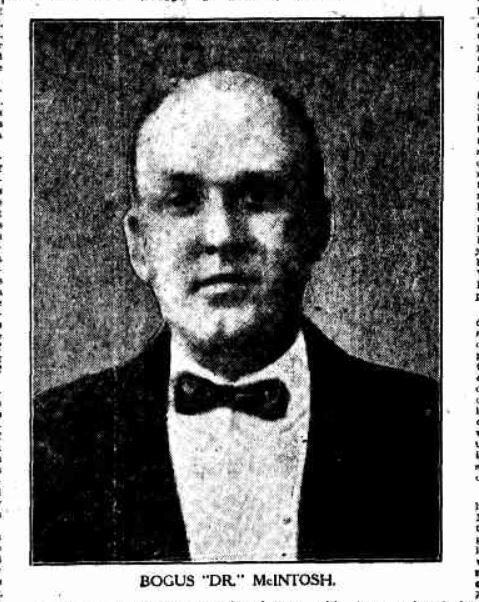
there is no doubt he believed himself qualified. There are many stories of the good “doctor” having helped people in situations of peril or sickness and even tragedy. So, while his crimes were illegal, he never did harm to another person. In fact, some would go as far to call him a hero in the truest sense of the word.
Perhaps the Truth in describing the career of McIntosh said it best…
“Truth” in various states has exposed McIntosh time and time again. But exposure means nought to the man. He doesn’t resist the inevitable arresting hand of the police force. He “goes quietly” and quite genially.
He has been in gaol so many times that gaol has no terrors for him. “Inside” he is a good and obedient prisoner and makes every use he can of the penitentiary library. But his career of imposition has been so long maintained that he can now be regarded as utterly incorrigible and thus the question arises whether Mcintosh is mad.
He certainly is not normal.
Doctor” MacIntosh, Fletcher, Anderson, Hardy, Lane etc. is certainly one of the more interesting characters I have had the privilege of researching. A fascinating man. The question of his sanity is one that comes up time and time again in the court records. His career is so long it is simply impossible to do it justice in these pages. So, if you have the time, search the newspapers on Trove and read for yourself the fascinating antics of this bogus character.
This Sunday at Boggo Road Gaol is our monthly Prisoner Tour. Come along, get locked up, and hear from one of our former prisoners Wayne Weaver what life behind bars was really like! Tickets are selling fast, you do not want to miss this! You can book your tickets here
This article was contributed by Research Coordinator Sue Olsen as part of the ongoing research program for Boggo Road Gaol Pty Ltd. The aim of the program is to bring to light and share articles relating to Boggo Road for the purposes of review and study. Do you have a story to share or something you would like us to know about? You can contact the research team here
Escape! The Cracow Robber – John Howard
- On : 6 July, 2018
- By : Boggo Road Gaol
- Category : Stories
- View : 1970
Escape! The Cracow Robber – John Howard
John Howard – The Cracow Mail Car Robber was charged in May of 1936 of having held up the Cracow Mail Car. The charge was highway robbery just like many bushrangers before him, it was a serious crime. Howard was fortunate to only receive seven years with hard labour in Boggo Road Gaol.
Native Place: Queensland
Age: 38
Height: 6 feet (183cm)
Weight: 12 Stone 6 oz (79kg)
Hair: Sandy Brown
Eyes: Blue
Complexion: Ruddy
Marks: Scar right cheek
John Howard – The Cracow Mail Car Robber was charged in May of 1936 of having held up the Cracow Mail Car. The charge was highway robbery just like many bushrangers before him, it was a serious crime. Howard was fortunate to only receive seven years with hard labour in Boggo Road Gaol.
Attempted Escape
Monday 7th August 1937, Officer Wyndibank was escorting John Howard from his cell shortly after 5am to the gaol kitchen for his breakfast shift. While Wyndibank was bolting a side door to the kitchen Howard ran from the room by another door and just then a section of the wall lights fused.
The lights in the kitchen and nearest wall towers were not affected however Wyndibank immediately gave the alarm and began to search.
Warder McCarthy ran to the track that runs between the stockade fence and the prison wall, Howard, spotting him ran back towards the kitchen where he was challenged by Officer Wyndibank and taken into custody.
Once Howard was secured, the officers searched the area around the stockade fence and found a rope fashioned from unbleached hanging from the stockade fence and nearby was a pair of slippers.
The rope, about 25 feet long was made from material smuggled from the prison tailors shop and plaited into a thick rope. It was attached to the wall by a hook formed from a kitchen fire poker.
A second prisoner Patrick Naylor who was working in the blacksmiths shop was charged with having assisted in the attempted escape. Evidence at a subsequent inquiry would allege that Naylor had obtained a 3-foot length of galvanised iron water pipe and cut it into a section fifteen inches. It was wound around the kitchen poker to strengthen it.
Both Howard and Naylor were taken into custody and imprisoned in Number 1 division in solitary confinement. Six other members of the kitchen staff were discharged from their position and replacements sought. A conspiracy having been suspected.
Both Howard and Naylor were convicted on the escape attempt and sentenced to the maximum additional term of 6 months with hard labour.
Robbery Under Arms
Saturday March 28th, 1936;
The Cracow mail car left Eidsvold shortly after 3pm for the return trip to Cracow with the pay of the workers of the Golden Plateau No Limit gold mine. The regular driver Alexander Miller being unavailable to drive that afternoon the job was left to 23-year-old Charles Walter Williams. Williams had along with him Mrs Violet Mc Dowell the wife of a tool sharpener engaged at the mine, fifty-two miles into the sixty-six-mile journey, around 5:45pm Mrs McDowell left the car to open the wire gate crossing the road when Howard leapt from his hiding spot and held a rifle to her chin. Howard next pointed the rifle at Williams telling him to “get out of that seat” he did. Howard told them both to get back, as he climbed into the driver’s seat and disappeared into the dust on the road to Cracow.
In the back of the car was the £1400 cash for the wages of the employees at the Golden Plateau, twelve registered packages belonging to the mine and eight sacks of mail. The cash £1350 in notes and £50 in silver and copper.
Williams and McDowell raised the alarm after walking over ten miles before being picked up on the road to Cracow. Local police at once set out in pursuit of Howard. Described as 30 to 40 years old, six feet high and weighing around 12 to 13 stone. He was dirty, wearing a Garbadine coat, dirty sand shoes and a dirty handkerchief tied on the lower half of his face. He had sandy coloured hair and blue eyes.
Capture
Foolishly, Howard returned to Cracow a few days later and tried to purchased goods with some of the stolen cash. Howard had been there some months before to purchase goods some of these items he were found by the police at his hide out back on the side of the road. Subsequently identified by the shopkeepers in Cracow, Howard was arrested and charged with Robbery under arms.
He was transported to Eidsvold, where he made an appearance in the Eidsvold police court. He was then remanded to appear in the Gayndah police court the same afternoon. Where he admitted that he was the man they were after and deeply apologised to Mrs McDowell for having caused her significant distress. He further assisted the police in locating the remainder of the missing money and the 22-caliber automatic rifle used in the hold up.
The Hudson motor car used to carry the mail from Eidsvold to Cracow had earlier been found by police. Mrs. McDowell and Williams had identified it as the vehicle they were riding in and positively identified Howard as the one who had held them up on their journey.
It was the assistance the gave police and the subsequent apology that Howard would rely on as his grounds for appeal.
Trial
Remanded to appear before the Rockhampton Circuit Court on the 12th of May 1936, Howard was subsequently found guilty of all charges.
- Engaged the successful hold up of the Cracow mail car.
- Robbery under arms of money intended to pay the workers of Golden Plateau Mine.
- Having stolen with actual violence a motor car.
Further evidence given at the trial would show that Howard was a returned solder with a good record. He was in the service for three years and had been shot in the right cheek during the war and gassed.
Judge Brennan in summing up said
“The crime for which you have been charged is a most serious one. I have sentenced you to seven years with hard labour. I could have sentenced you for life. If you feel the punishment is too harsh you can appeal to the full court.”
The Appeal
John Howard would attempt to appeal the decision. As we said earlier on the grounds that he had been most helpful in assisting the police to locate the remainder of the stolen money, had lead them to the location of the missing rifle and had apologised for his actions.
Justice Henchman having none of this said “you only apologised because you were caught. You said yourself had you have been free you would not have apologised”
A modern-day bushranger.
Justice Henchman continued further “We thought that Ned Kelly and his gang had gone in Australia. Ned Kelly was kind to women too. In this case you made careful preparation to hold up that coach. It was done in keeping with the greatest traditions of such robberies under arms, and you took the opportunity when you knew the wages were going to Cracow. Your request for appeal is denied.”
So, it was, Howard was sent of to St Helena Island prison for seven years with hard labour. Only that St Helena closed, John Howard would not have ever been in Boggo Road Gaol. Howard was one of the prisoners moved across to number two division Boggo Road Gaol when the women’s prison was moved elsewhere on the block.
This escape attempt had a profound effect on the prison. The rules for the management of prisoners and how they would be punished will forever be changed as a result. Prisoners lost privileges, Officers were severely reprimanded; and the prison searched from top to toe.
This Sunday, you can see for yourself the section of wall that John Howard climbed over in our Escapes Tour. Located directly behind D Wing. The Escapes tour is hosted by Director Jack Sim this is a rare treat! Don’t delay book your tickets today!
This article was contributed by Research Coordinator Sue Olsen as part of the ongoing research program for Boggo Road Gaol Pty Ltd. The aim of the program is to bring to light and share articles relating to Boggo Road for the purposes of review and study. Do you have a story to share or something you would like us to know about? You can contact the research team here
Juett sisters – The tragic life of Lily Juett
- On : 29 June, 2018
- By : Boggo Road Gaol
- Category : Stories
- View : 2836
Juett sisters – The tragic life of Lily Juett
Young women of poor origins quite frequently found themselves falling afoul of the law. Her Majesty’s Prison for Women Brisbane at Boggo Road was where most of these women ended up.
The Juett sisters were no exception. Minnie and Lily Juett were natives of Bundaberg, North Queensland. Their parents had nine children and were of simple farming stock. The children were sent out to work as soon as it was suitable. Minnie and Lily were sent to work as servants in some of the finer homes and their brothers as labourers on farms around the Rockhampton and Bundaberg region.
Minnie and Lily were not long in their new profession, both having been discharged for theft and improper conduct. Both could not return home and turned to the streets to make their living. After some time had passed, the sisters had saved enough money that they made their way by ship to Brisbane; hoping to change their futures for the better.
Today, we are going to turn our attention to the youngest of the two sisters, Lily Juett.
Lily Juett
Native Place: Bundaberg, Queensland.
Age: 20 years 11 Months
Height: 4 feet 8 ½ inches (143cm)
Weight: 6 stone 10 lbs (42.6kg)
Make: Slight
Complexion: Pale
Hair: Fair
Eyes: Blue
Marks: Three vaccination marks on left arm and scar on left temple.
Before the court
Lily was only just sixteen years old when she first ran afoul of the law. Being charged with the common offence of Vagrancy. The police magistrate took pity on her, her situation could only be described as terrible, and he sent Lily to the Salvation Army Home for wayward ladies. It mustn’t have had much effect; for just six months later Lily was again before the court, charged with having no lawful means of support. Again, she was sent to the Salvation Army Home.
This was the beginning of a downward spiral for Lily. She was found in one of the more notorious brothels in town, George Antoni’s Oyster Saloon on Albert Street. She with other young girls were attracted to Antoni’s by the offer of free food and lodging. Little did these young girls know, they had to work for their keep in the most degrading way.
Antoni’s was regularly in the press and often raided by the police and the health department as a house of ill fame. Lily would continue to reside at Antoni’s often over the next two years.
In 1906, Lily was charged with quitting the lock hospital and breach of the communicable diseases act. Two laws that prostitutes were regularly charged with having broken. Lily spent most of 1906 in gaol after numerous small offences.
We next hear from Lily in June of 1908 when she is charged with having created a public disturbance in Albert street and for damaging a policeman’s trousers while engaged in a scuffle. She was given a fine or 7 days in gaol. Lily chose gaol.
Again, in September of 1908 Lily was in court. This time having been charged for being armed in public with no lawful reason. She had allegedly fired several shots into the air in Albert Street. Luckily for Lily, not enough evidence was available to proceed, and the case was dismissed. It wouldn’t be long however until Lily’s luck would run out.
Mary Street Tragedy
10:30pm , Monday 31st May 1909, O’Brien’s cottage, 82 Mary street, Brisbane.
From the headlines of The Truth.
Shortly after 10:30pm in a dingy cottage adjoining the Oriental Hotel on the corner of Mary and Albert Streets, Brisbane. Shots rang out.
A witness screamed… “Someone is shooting Lily” The ladies of the cottage ran to her aid. Only to find the door barricaded from the inside. Thelma Woods, a single woman, who lived in the room next to Lily poked her head through an open window seeing Lily on the floor and turning to see a man blocking the door before he turned the gun on himself and fired. She screamed and ran to meet Constable Roche who having heard the shots was making his way toward her.
Earlier that evening, Lily and the unknown man had been sharing drinks at the Oriental Hotel. They seemed very friendly and at closing time were very drunk. It would later be known that Lily had previously been in a relationship with the seafaring, powerfully built man. She had received word that he was arriving at Pinkenba. He was an engineer on a ship called Strathspey.
That evening after their day together, Lily announced that she had been keeping company with another man and that his case was hopeless. She intended to marry her lover. This is said to have thrown the man into a rage and quite possibly have caused the crime.
Just before entering her room that night, she had told another of the ladies of the cottage that should anything happen to her that night, to tell her lover that she loved him to the last.
It was not long until a crowd had formed surrounding the cottage and news had reached another lady of the evening, Minnie Juett. Minnie came rushing forward, eventually being allowed into the room by the police. When she saw her little sister lying on the floor covered in blood, Minnie cried out and was carried from the room by the kindly officers. She communicated with her mother who at once made for the scene from Bundaberg.
The subsequent magisterial inquiry and post mortem would show that poor Lily had been shot twice in the head and once in the chest at extremely close range. Her death was instant.
It would also prove that the man identified as Karl or Carl Eberhardt (alias August Hesse) was in possession of a five chambered revolver and a pocket watch when spoken to by police in Newcastle New South Wales some months previously. These items were found in the room along with other personal effects with the name Carl Eberhardt. It was conclusive, it was he that fired the fatal shots and murdered Lily before turning the gun on himself.
The Truth newspaper published the most complete coverage of this story. The editor summed up this tragic tale of woe with the inventory of Lily’s worldly possessions.
“For any young ladies having any doubts on the Fairy Tales of the earnings of vice, the inventory of her possessions will round out this tale of vice, debauchery, degradation and death. In hard cash, £1 and 13 shillings, of which 3 shillings and 6 pence were from her last transaction on earth. Lily Juett was young just on the verge of 21. Her only other possessions included: one umbrella, three blouses, one petticoat, one chemise, one singlet, one pair of stockings, one pair of slippers, one chain purse (empty), one steel belt, one string of beads and a pawn ticket for a ring in the name of Miss Wilson.
That inventory is a better homily on the folly and degradation of vice than all the sermons that were ever preached and comment of any sort would lesson not increase its effect.”
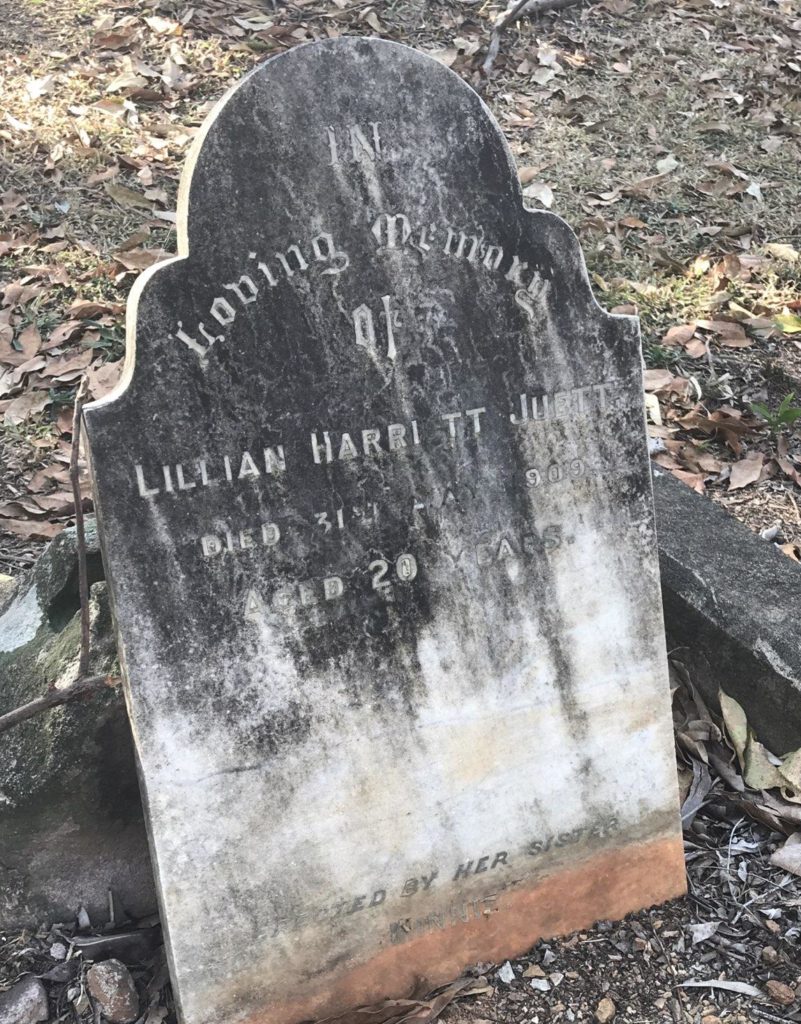
For many ladies that have at one time seen the inside of the walls at Boggo Road Gaol, this life would be all too familiar. Not all ended so tragically. Some would say though that living numerous years longer in the same daily cycle of degradation and despair would be much worse.
Of all the charges passed on the women in the earliest days of the female division, the vast majority had a charge for Prostitution. Often listed in the registers as vagrancy, without visible means of support, offensive language and public disturbance. It was very common, and a sad commentary on society of the time.
Want something cool to do this Sunday? Learn more about the women at Boggo Road Gaol by taking an 11am History Tour and watching our Prison Players perform! You can book your tickets here
This article was contributed by Research Coordinator Sue Olsen as part of the ongoing research program for Boggo Road Gaol Pty Ltd. The aim of the program is to bring to light and share articles relating to Boggo Road for the purposes of review and study. Do you have a story to share or something you would like us to know about? You can contact the research team here
From the headlines Officer retires after 41 years
- On : 21 June, 2018
- By : Boggo Road Gaol
- Category : Stories
- View : 2358
From the headlines… Officer retires after 41 years
Chief Warder Henry ‘Harry’ Victor Vanderwolf
‘Harry’ retired on the 25th of May 1953, just one day after his sixty-fifth birthday. He and his wife retired to 4th Avenue in Caloundra where they can be found into the 1970s. Indeed, it would have been a wonderful sea change for a man who worked inside brick walls and iron bars for most of his days.
Henry Victor Vanderwolf, known as Harry, was born in Maryborough to John Rowe Vanderwolf and Jane Ann Payne. His parents had emigrated with his older siblings from Cornwall in England on the Duke of Athol in 1881. The family set up home in Maryborough and proceeded to live there for over fifty years.
Harry was one of a large family of ten children, eight of whom were sons. He had a large family already here in Queensland with his fifty plus cousins. Frustratingly for the researcher… they all had a Harry.
Harry joined the prison service shortly after his 22nd birthday, officially recognised as a probationary warder in the Queensland Government Gazette of 1912. It is unconfirmed where he spent his first few months in the service, although it is likely it would have been in the Brisbane lockup. By the time Harry completed his probation, he was transferred to the notorious St Helena Island. Known for its harsh conditions both on officers and prisoners alike, St Helena would have been no easy mark. Certainly, St Helena would prove useful to Harry as his career was to progress.
In addition to relatives in Queensland, the Vanderwolf clan had made their way south of the border into the suburbs of Sydney, New South Wales. It was here, on summer vacation in 1917 he would find his sweetheart in Christina Ellen Mitchell; they were married a few months later in Marrickville, New South Wales.
At the end of the war, Harry had set the family up and had returned to his post at St Helena Island. It would not be long before a daughter would grace their little home. So onwards time went, Harry had seen his friends and family go off to war and come home greatly changed. It wasn’t long until his life would be profoundly changed too, in a good way!
In the newspapers of the day, numerous entries can be found talking about the prison at St Helena Island. There had been murders, terrible assaults, formal complaints and disciplinary action; it truly was a hell hole for everyone. Succumbing to overwhelming pressure, it was clear something had to be done. St Helena would be closed as a maximum security prison, and the prisoners moved to the female division at HM Prison Brisbane (later known as Boggo Road Gaol). The female inmates were transferred to another section of the Gaol to make way for the men. For Harry, this was a most unexpected windfall.
HM Prison Brisbane 
Harry was moved to his new station at HM Prison Brisbane with one of the first loads of men to be transferred. It would prove to be a great move. Just ten years later, Harry climbed the ranks to be Chief Warder of Boggo Road Gaol, a position he would go on to hold for the next twenty years.
Just after Christmas in 1932, Harry was promoted to Chief Warder at Boggo Road. The family celebrated and moved into their new home, the quarters of the prison. This indeed was a step up socially and personally. Sadly though, things were to take a sad turn. His beloved wife passed away aged just 47 years. Christina Ellen Vanderwolf was laid to rest at the Lutwyche Cemetery.
Again, the years moved on, each day entering those gates at the prison and looking after some of society’s worst characters.
A few years later at a church social, he was to meet the future Mrs Vanderwolf. Eliza Linda Letty Uhllman, a spinster and a bit younger than Harry, caught his eye and the rest would be history. They were married in 1939, just at the beginning of yet another world war.
Indeed, his own daughter joined the service, it is not known what exactly she did as her records are not open for viewing.
Harry, however, had an eventful next year, becoming instrumental in the apprehension and conviction of Ernest Arthur Halliday or ‘Slim’ as he was known around the Gaol. In February of 1940, Slim would make the first of his two escapes. Harry was the officer that found a rope hanging from the prison wall. Halliday had escaped over it all right. The rest of this story you will hear on your tour, so I will leave it there for now. Harry would raise the alarm and would be involved in this story for years to come.
In 1948, with just a few years to go before compulsory retirement, Harry was again promoted to Chief Warder second class, which would certainly have been a pay increase and perhaps other long-term benefits as well. It is here we lose Harry for a few years before he reappears in the papers.
Casket Win
Remarkably, just shy of his retirement, Harry collected a handsome Casket win. Fifth prize of £300 to be exact. It would certainly be nice to add to the retirement fund. Harry remarked that it had been the most timely gift of his life. He had just finished building his retirement home at Caloundra where he intends on spending his time fishing.
Retirement
Harry retired on the 25th of May 1953, just one day after his sixty-fifth birthday. He and his wife retired to 4th Avenue in Caloundra where they can be found into the 1970s. Indeed, it would have been a wonderful sea change for a man who worked inside brick walls and iron bars for most of his days. In all, Harry served 41 and a half years in the prison service, which by today’s standard, is an eternity. Harry lived at Caloundra until he died in 1976. He is buried with his wife at the Caloundra Cemetery.
Want to know what it was like to be an officer at Boggo Road Gaol? Come along this Sunday for our Officer tour and meet Former Officer Kevin Hayden! For more information click here
This article was contributed by Research Coordinator Sue Olsen as part of the ongoing research program for Boggo Road Gaol Pty Ltd. The aim of the program is to bring to light and share articles relating to Boggo Road for the purposes of review and study. Do you have a story to share or something you would like us to know about? You can contact the research team here.
Officer’s requests
- On : 15 June, 2018
- By : Boggo Road Gaol
- Category : Stories
- View : 2132
Officer’s requests
Some would say that Prison Officers have one of the toughest jobs in the world. Everyday they enter the world behind bars and work with some of the worst of the worst. Ever wonder what it takes to do the job? Well in this week’s article we talk about the prison service and the role that officers had in shaping the correctional institutions in Queensland as we know them today.
Officer’s requests
Some would say that Prison Officers have one of the toughest jobs in the world. Every day they enter the world behind bars and work with some of the worst of the worst. Ever wonder what it takes to do the job? Well in this week’s article we talk about the prison service and the role that officers had in shaping the correctional institutions in Queensland as we know them today.
Prison Service in Queensland
The prison service in Queensland is one of the foundation departments formed when Queensland was separated from New South Wales in 1859. Officially forming in 1860 the service was represented by various small gaols, penal establishments and lock ups in the colony. These were all under the management of the Sheriff of Queensland. Sounds a bit like the wild west doesn’t it? In 1887 a commission into the management of the various gaols, penal establishments and lockups in Queensland brought about a sweeping change. The report recommended the consolidation and amendment of legislation to make room for the creation of the Prison Service and the appointment of the Controller General to manage all prisons in the colony.
These changes would not happen quickly, it takes quite some time to make significant changes to legislation. The Prisons Act of 1890 would be the eventual result. The act will be the first of many changes over the coming decades.
The changes in the management of prisons in Queensland would mean the hiring and retraining of staff. These continual changes in expectations over the life of HM Prison Brisbane later known as Brisbane Correctional Centre or Boggo Road Gaol were posted on the wall for officers to see and apply as they happened. A copy of the vast majority of these are kept in a fascinating series of records held at the Queensland State Archives. These records were held in each of the prisons in Queensland.
Prison Rules and Orders Book: 1869-1961 – Brisbane Correctional Centre.
Description:
Books of letters, circulars and memoranda from the Sherriff of Queensland and later the Controller General of Prisons to the Superintendent of the Brisbane Gaol later known as HM Prison Brisbane or the Brisbane Correctional Centre.
So, what happened if you didn’t follow the rules? Well, you would be officially charged, and the details recorded in an equally fascinating series the Register of officials and warders and defaulters book 1865-1947. The punishment being anything from being docked a day’s pay, to dismissal and even a prison sentence!
Prison and Asylum Workers Union
Just like any other union, it is set out for the purposes of protecting the rights of workers. Founded in 1915, it was the beginning of the union movement in the prisons and asylums in Queensland. In August of 1915 the inaugural conference was held in Trades Hall, Brisbane. The first conference set out the rules and regulations of the union and elected a committee. In attendance were representatives from all the gaols, penal institutions, lockups and asylums in Queensland. It certainly must have been an impressive turn out.
As an outcome of the conference, the subsequent report set some of the foundations of the modern system of employment in the correctional services industry. Indeed, you will probably recognise some items that are still in practice today and some that are still under negotiation in most industries a century later.
- A 40-hour week
- Salary increases
- Night shift allowance
- Overtime
- Vacancies posted in the Government Gazette
- Equal pay for male and female employees
- No extra duties for night staff
- Charges made in writing – what we later know as a written warning.
The conference committee then approach the Sherriff or later the Controller General for approval of the items discussed. The conferences held under the Prison and Asylum Workers Union continued until 1918, when the two were separated. These unions are now covered under the Australian Workers Union.
 Sublime to the ridiculous?
Sublime to the ridiculous?
An article published in the Courier Mail Newspaper in August of 1939 dealt with the need for prison officers to have slippers… so as to not wake the prisoners at night! Of course, at the minister’s discretion! Whether or not this ever came in, is not yet known. But we will keep you posted!
Want to know what it was like to be an officer at Boggo Road Gaol? Come along this Sunday for our officer tour and meet former officer Kevin Hayden! For more information click here
This article was contributed by Research Coordinator Sue Olsen as part of the ongoing research program for Boggo Road Gaol Pty Ltd. The aim of the program is to bring to light and share articles relating to Boggo Road for the purposes of review and study. Do you have a story to share or something you would like us to know about? You can contact the research team here.

